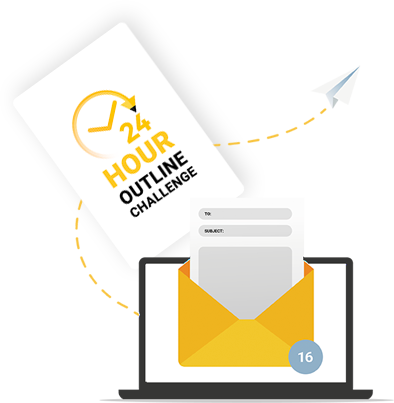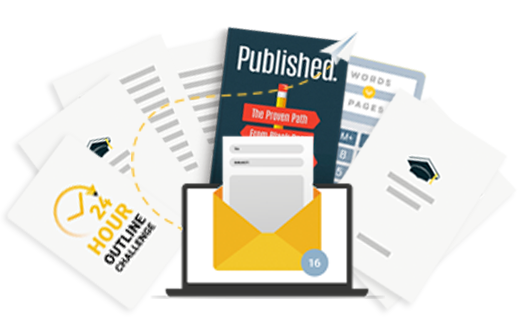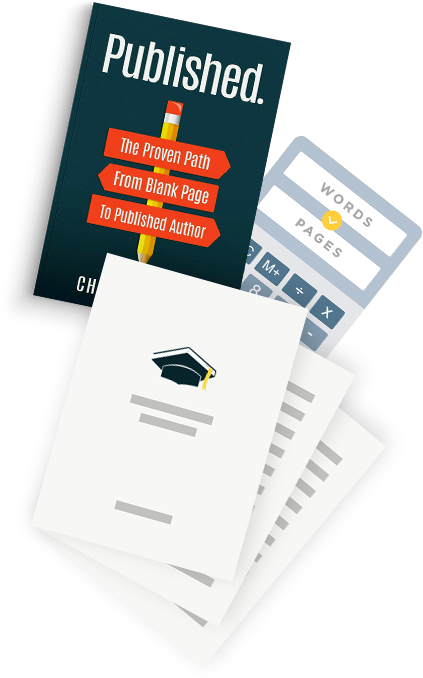You might hear “literary trope” and flinch, because tropes are bad, right?
Nope!
Or at least not in every case.
A literary trope is just a common thread that you’ll see in certain genres and subgenres of fiction. So tropes are usually good, actually.
In fact, if you write for a certain literary niche and neglect to include the expected tropes, you’ll likely get some nasty reviews about it.
Let’s talk about the genre where tropes are the most important for readers: Romance.
What is a romance trope?
A “trope” refers to a theme, image, character, or plot element that has been used many times in literature.
A romance trope can be a plot, character, or situational trope that you commonly find in romance novels. We’ll look at lots of examples in a minute, but let’s talk about about how and when to use them first.
Should you write with romance tropes?
You should absolutely write with romance tropes! Particularly in romance genres, tropes are what sell. There’s only one bed, enemies to lovers, fake dating, forbidden romance, and other tropes are highly sought after by romance readers. Many people simply search these terms to find their next read.
Tropes can go in and out of style. Some writers will try to ride the waves of trends by writing to market, which means they keep a finger on the pulse and write whatever popular thing to quickly publish and get in on the action.
If the thought of writing and publishing that quickly freaks you out, no worries! Plenty of authors find success writing whatever interests them. After all, someone has to start the trends, right? 😉
And if you know you want to write romance, but aren’t quite sure where to start, check out this article for some romance writing prompts.
How to write with romance tropes
While tropes aren’t necessarily bad, there are a few things to keep in mind while writing with romance tropes. Here are questions you might ask yourself before choosing your tropes.
1. Is the trope problematic?
Since a “trope” is simply a popular format of something in literature, that means many of them are influenced by internalized bias and harmful stereotypes. Make sure the tropes you write with aren’t based in stereotypes or marginalizing a group of people.
Some examples of problematic tropes in romance could be romanticizing abusive behavior, putting a marginalized character in a stereotypical role, and the “bury your gays” trope.
If you’re worried that your story might be offensive, a sensitivity reader could help you out.
2. Is the trope too tired?
While tropes are popular by nature, sometimes one has been done to death. If readers are becoming tired of a particular trope, you might shelf that project until it loops back into popularity in a few years, as they typically will.
3. Is the trope currently popular?
While not every author strives to “write to market,” you should still do a little research on tropes to see what readers are interested in right now.
4. How can you give it a twist?
Can you bring a fresh perspective to a beloved trope? Even a small tweak can bring new life to a traditional trope.
Examples of romance tropes
Here are fifteen examples of popular tropes you’ll often see in romance novels. Have you written any of these yourself? When you’re reading the latest and greatest from the romance genre in the near future, keep an eye out for them!
1. Fake dating
The “secret dating” trope was widely popularized in fanfiction, where writers put their favorite characters in a situation where they pretend to be together (for example, someone needs a date to a wedding so their family will get off their back about being single), then it typically becomes less of an act as the story progresses.
2. Small town romance
This is a popular trope in Lifetime and Hallmark films, where one character usually comes to town from a big city and, quite reluctantly, grows to love the town and a particular citizen of it.
3. Secret royalty
A good example of the secret royalty trope is The Prince and Me, where a college girl falls in love with a classmate before realizing he’s royalty.
4. Forbidden love
Romeo and Juliet.
5. Second chance
When a couple are thrown into each other’s paths sometime after their failed attempt at a relationship. This is popular with mature readers, as it’s an opportunity to bring a new and exciting romance to older characters.
6. Fish out of water
When a romantic lead finds themselves in an unfamiliar, daunting situation that they don’t feel prepared for. Think of a kid swapping high schools for their senior year.
7. Forced proximity
When our couple has no choice but to be close to each other. Usually we see this trope with a pairing who aren’t fond of one another, but sometimes it’s the meet-cute scene! Set It Up (2018) has two characters trapped in an elevator, and that’s the first time they interact with one another.
8. Surprise parenthood
When there’s an unplanned pregnancy, a child reveal, or by some other venue. For example, Life as We Know It (2010) is the story of two people being forced to co-parent a child after the sudden death of their best friends. By the end, they’re in love.
9. Rags to riches
A popular example of this trope is the hit-or-miss Fifty Shades of Grey franchise. Anastasia Steele is minding her business as a grad student in a shared apartment when she meets billionaire Christian Grey, who pulls her into a life of wealth.
This trope is a good example of the “wish fulfillment” genre, where a moderately bland character has unbelievable luck. The unremarkable main character is important for this genre, allowing readers to “insert” themselves into the story. If the main character is too unique or strange, the self-insertion reading experience is less achievable.
10. There’s only one bed
This is another trope popularized in fanfiction. It’s exactly how it sounds—the romantic pairing has to share a bed. Whether it’s from a hotel reservation mixup on a business trip with a colleague, or perhaps an unfortunate rooming situation in a parent’s house (this happens often in Fake Dating stories), the result has to be the pair sharing a bed outside of their own volition.
11. Amnesia
When one part of a couple suffers amnesia. It could be a character who forgets their spouse, forcing the couple to reaffirm their love for one another. Or it could have more hijinx, like in the romcom While You Were Sleeping (1995), where a nurse misunderstands Sandra Bullock’s profession of love to an unconscious stranger and assumes they’re engaged. The character gets swept up in a lie while the man is in a coma, because his family enthusiastically welcomes her and she doesn’t have a family of her own.
This romcom diverts expectations by (SPOILERS) having her fall in love with the man’s brother instead.
12. Coming home
Again, think of Hallmark movies for this one. This trope is typically when a character returns to their small hometown after a few years of living in a big city, only to fall in love with a folksy local.
13. Rescue
The rescue trope is a great way to jump right into a romance. After all, if someone hot saves your life, you’re gonna pay attention.
In Titanic (1997), Jack saves Rose from attempted suicide. After that event, they fall in love, and at the end of the film (SPOILERS, for anyone who has somehow never watched Titanic), an elderly Rose says that Jack saved her in every way a person could be saved, then we all sobbed.
14. Workplace romance
I won’t waste your time with an example when we’re all already thinking of Pam and Jim.
15. Out of your league
The standard format for this trope is a dweeby, but loveable, guy falling in love with an impossibly beautiful, accomplished, and kickass lady. This trope is usually accompanied by unbridled pining and Rocky-style montage sequences where the man wins her affection.
This is a great opportunity to turn a trope on its head, since it’s a pretty tired one. Simply swapping roles (dweeby woman falls for accomplished, attractive man) or diversifying the cast (make it gay!) can bring a fresh take to this classic trope.
- Related: How to Write Romance Scenes
Examples of relationship tropes
Here are nine more trope examples, specifically about romantic relationships between characters.
1. Love triangle
When he likes her, she likes him, and he likes the other him. Or they both like her! The love triangle trope is when there are three love interests, but they’re not all interested in each other. A popular example of the love triangle is the Twilight trio of Bella, Edward, and Jacob. Jacob and Edward both want Bella, but Bella only wants Edward.
2. Soulmates
When the lead couple are connected by fate or another mystical source of assertion.
3. Enemies-to-lovers
The arc of a pairing going from enemies to eventual lovers. A strong example of this trope is one of my favorite books, This Is How You Lose the Time War by Amal El-Mohtar and Max Gladstone. Red and Blue are soldiers on opposite sides of a war, but they bond through some of the wildest and weirdest pining you’ve ever read.
4. Friends-to-lovers
A pair of best friends end up together. In 13 Going on 30 (2004), the main character travels to the future and realizes she hates the way her life turned out, especially because she lost touch with her childhood best friend. When she goes back to the present, she connects with him in a way she never had before, and they end up married.
5. Sunshine and grumpy
When one part of the pair is optimistic and sweet, and the other is a cloudy grumpy pants. Mermista and Seahawk vibes.
6. Childhood friends
Mary’s Song (Oh My My My) by Taylor Swift is a shining example of this trope. A pair of kids who played together as children grow up to fall in love. The story is told from the perspective of an elderly woman, as many of the best Taylor Swift songs are.
7. Power couple
The power couple trope is when all parties in a romantic relationship are killing it. The parents from the Spy Kids franchise immediately come to mind.
8. In disguise
When one or all members of a romantic entanglement are in disguise from the others. For example, Mary-Jane and Peter Parker in Spider-Man (2002). Mary-Jane has feelings for both Peter as himself, as well as for Spider-man, not realizing they’re the same person.
9. Opposites attract
This trope has the possibility of being very cute or very cringe. Balancing the concept of “opposites” in a relationship, while also making their dynamic relatable, likable, and affectionate is something not every writer can pull off.
One of my favorite examples of an “opposites attract” couple is Elphaba and Fiyero in the musical, Wicked. Elphaba is a studious, serious girl who is weighed heavily by responsibilities. Fiyero is the party boy, “dancing through life” on his good looks, charm, and generational wealth. He helps Elphaba cut loose and have a little fun, and Elphaba saves his life.



